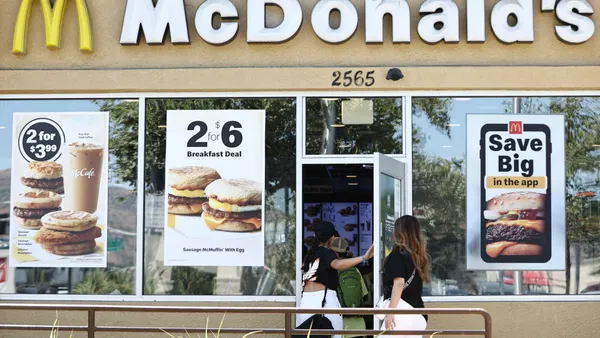Dive Brief:
- Customer satisfaction across industries in the United States fell slightly in Q1 2025, according to The American Customer Satisfaction Index released last week. The index fell 0.4% quarter over quarter and is now down 1.3% year over year to 77 on a 100-point scale.
- The minor dip in satisfaction was widespread, but the U.S. Postal Service, cell phones, apparel and online investment companies led the decline. For the first time since the COVID-19 pandemic, the index has remained flat or dipped for four consecutive quarters.
- Forrest Morgeson, associate professor of marketing at Michigan State University and director of research emeritus at the ACSI, cautions against reading too granularly into the cross-industry measure. The top line shows there has been a leveling out of customer satisfaction and that things are generally moving “back to normal” after the customer satisfaction swings caused by the pandemic.
Dive Insight:
The leveling out of customer satisfaction could be disrupted, however, by tariffs.
Multiple surveys show that U.S. consumers are anxious about how tariffs will impact prices and the economy writ large. Consumer sentiment fell in May for the fifth straight month to a three-year low, according to the University of Michigan’s consumer sentiment index, released Friday.
However, the economic uncertainty caused by tariffs didn’t weigh heavily on customer satisfaction in the first quarter, Morgeson said. That’s in large part because of how the ACSI surveys.
The ACSI asks how satisfied consumers were with recent purchases, while other measures — like consumer confidence and consumer sentiment — are more forward looking, asking consumers to predict their feelings about the economy over the next six months, Morgeson said.
Tariffs may play a bigger role in customer satisfaction in the second quarter. Though the U.S. and China have agreed to pause steep tariffs, some retailers and manufacturers held off placing orders and shipping goods.
That will cause product shortages and price hikes, but that impact is more likely to be seen in the ACSI’s consumer satisfaction measure next quarter, according to Morgeson and Jon Picoult, founder and principal of Watermark Consulting.
“If a consumer has trouble finding the goods they want, at a price that feels fair relative to their historical anchor points, then it’ll likely leave them at least somewhat dissatisfied — even if the underlying drivers are largely out of the business’ control,” Picoult said in an email.
While it’s still unclear how tariffs will unfold, it’s important for businesses to have a plan and answer some key questions, according to Picoult.
“How much of a tariff could you realistically absorb without triggering price increases?” Picoult said. “If price increases are necessary, how will you communicate that? Can you mitigate the sting of price increases by pairing them with some additional source of value for the customer — bells, whistles, or add-ons that could be bundled to help support the business’ value proposition?”












